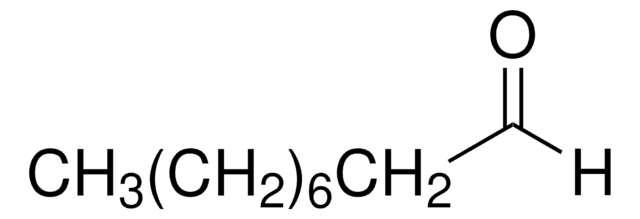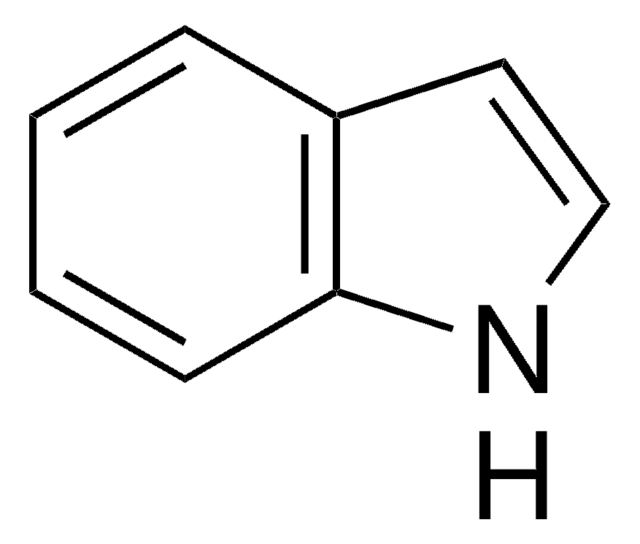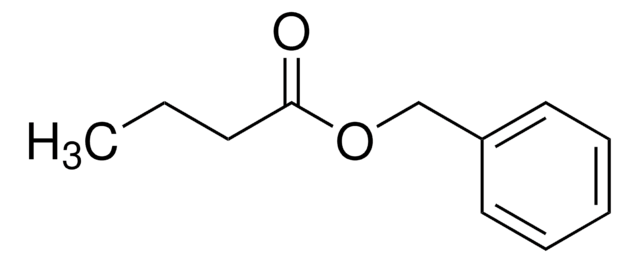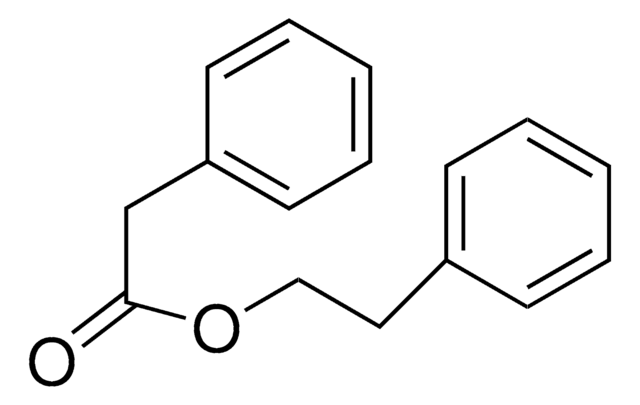W280615
Octyl acetate
natural, ≥98%, FCC, FG
Synonym(s):
Acetic acid octyl ester
About This Item
Recommended Products
grade
FG
Fragrance grade
natural
Agency
follows IFRA guidelines
meets purity specifications of JECFA
reg. compliance
EU Regulation 1223/2009
EU Regulation 1334/2008 & 178/2002
FCC
FDA 21 CFR 172.515
vapor density
5.9 (vs air)
Assay
≥98%
autoignition temp.
515 °F
expl. lim.
8.14 %
refractive index
n20/D 1.418 (lit.)
bp
211 °C (lit.)
density
0.867 g/mL at 25 °C (lit.)
application(s)
flavors and fragrances
Documentation
see Safety & Documentation for available documents
food allergen
no known allergens
fragrance allergen
no known allergens
Organoleptic
floral; fruity; sweet
SMILES string
CCCCCCCCOC(C)=O
InChI
1S/C10H20O2/c1-3-4-5-6-7-8-9-12-10(2)11/h3-9H2,1-2H3
InChI key
YLYBTZIQSIBWLI-UHFFFAOYSA-N
Looking for similar products? Visit Product Comparison Guide
General description
Application
Storage Class Code
10 - Combustible liquids
WGK
WGK 2
Flash Point(F)
189.1 °F - closed cup
Flash Point(C)
87.3 °C - closed cup
Regulatory Listings
Regulatory Listings are mainly provided for chemical products. Only limited information can be provided here for non-chemical products. No entry means none of the components are listed. It is the user’s obligation to ensure the safe and legal use of the product.
FSL
Group 4: Flammable liquids
Type 3 petroleums
Hazardous rank III
Water insoluble liquid
JAN Code
W280615-SAMPLE:
W280615-25G:4548173973289
W280615-1KG:4548173973272
W280615-4KG:
W280615-BULK:
W280615-100G:4548173973265
W280615-VAR:
Choose from one of the most recent versions:
Already Own This Product?
Find documentation for the products that you have recently purchased in the Document Library.
Articles
It seems that more and more consumers are demanding fragrance-free products, be it for household cleaning or personal care. Some believe that in doing so, they are purchasing a more natural product.
Our team of scientists has experience in all areas of research including Life Science, Material Science, Chemical Synthesis, Chromatography, Analytical and many others.
Contact Technical Service







